Help prevent the spread of coronavirus by making and using this upcycled fabric face mask with a non-woven coffee filter insert.
Canada’s Chief Public Health Officer, Dr. Theresa Tam, has put forward a recommendation for the general public to wear non-medical masks or face coverings, in situations where it’s difficult to maintain two meters distance from others while indoors.
This means we should all wear masks at the grocery store, pharmacy, and on public transit. And while medical masks should be reserved for healthcare workers, we can make our own upcycled non-medical mask using items we might already have at home (bonus points if you don’t buy anything new!)
Together, we can help prevent the spread of the coronavirus, keep our communities safe, and reduce our collective environmental impact.
What’s the best fabric to use for your face mask?
You should use plain, tightly woven cotton, not a stretchy knit, and wash it in hot water to shrink the fabric prior to making your mask.
How to make a no-sew non-medical fabric face mask
You will need these materials:
- Cotton fabric (you can use bedsheets, pillowcases, t-shirts, pyjamas, handkerchiefs, bandanas, tea towels, tote bags, or denim)
- Ties (you can use hair ties, elastics, bias tape, string, twill cord, shoelaces, strips of fabric or jersey knit, or cording)
- Non-woven insert (you can use piece of a non-woven fabric bag, shop towels, coffee filters, dry wet wipes, or kleenex)
- Safety pins
- Tape (you can use duct tape, scotch tape, masking tape, or electrical tape)
You will need these tools:
- Scissors
- Measuring tape or ruler
- Pencil
Instructions:
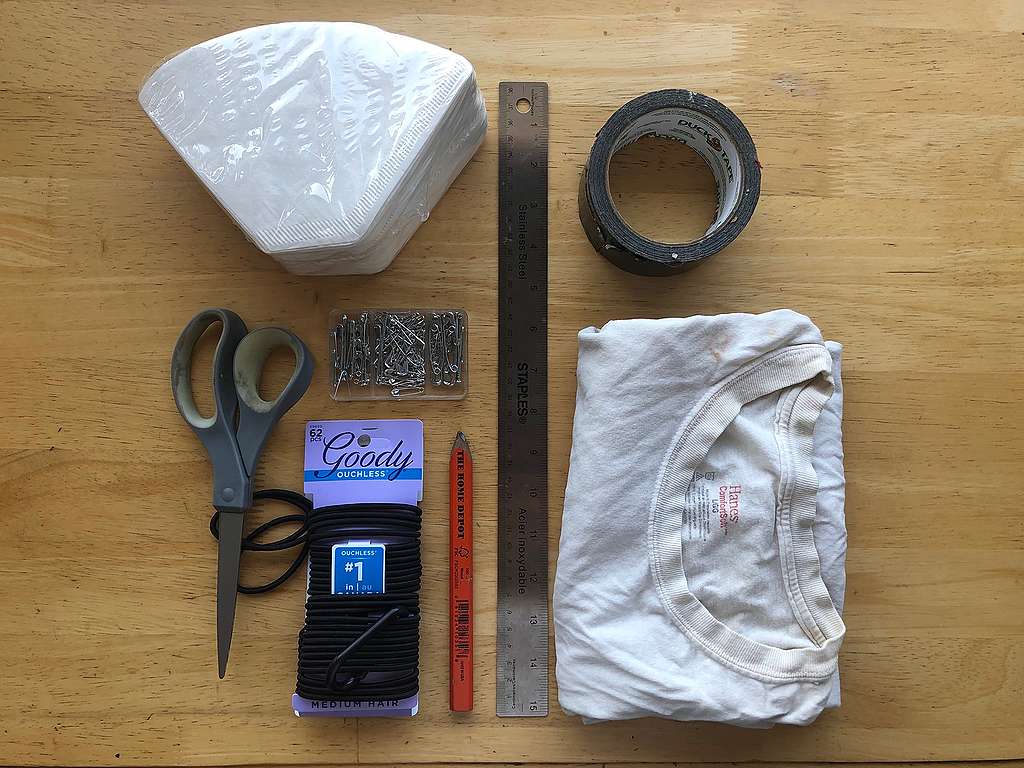
1. Cut your cotton fabric into a rectangle of 13 inches (33cm) tall by 14 inches (35.5cm) wide.
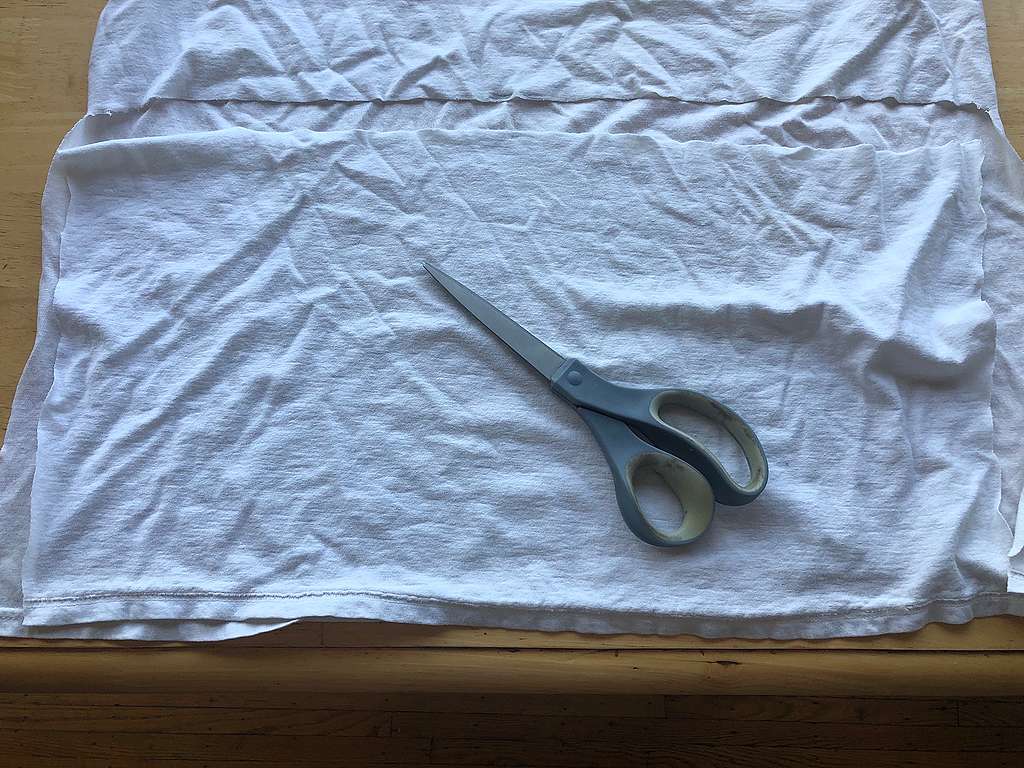
2. Cut your coffee filter to size to fit the cotton fabric. Remove one inch from the tip of the coffee filter. The wide rounded side will be the top of the mask.
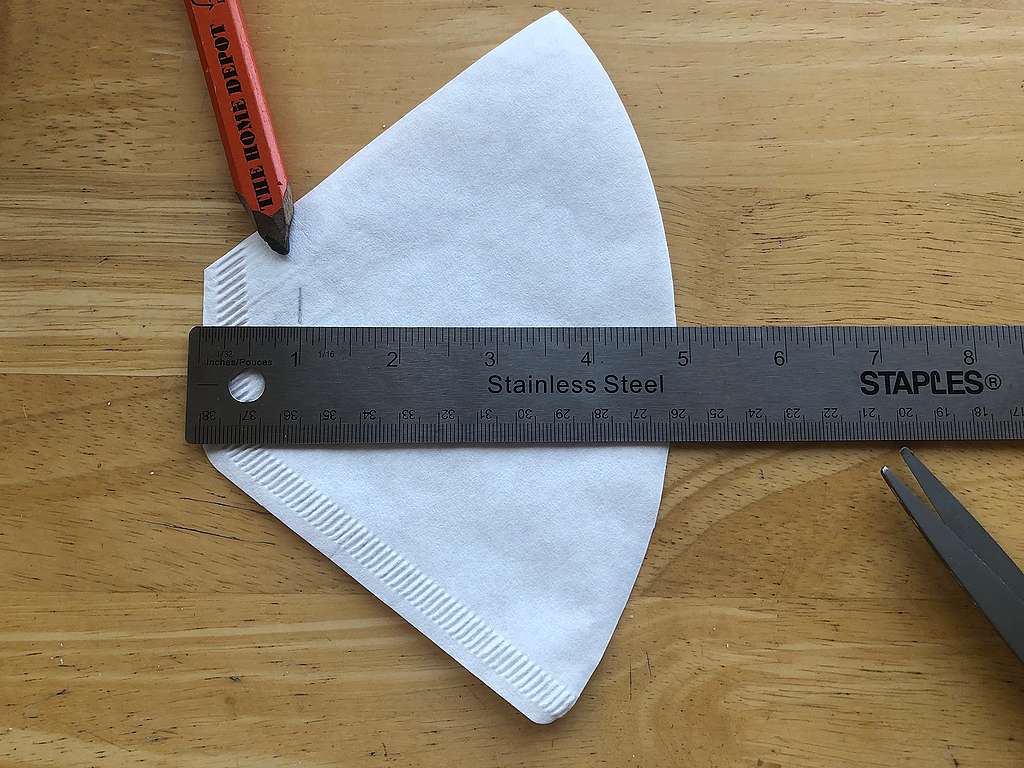
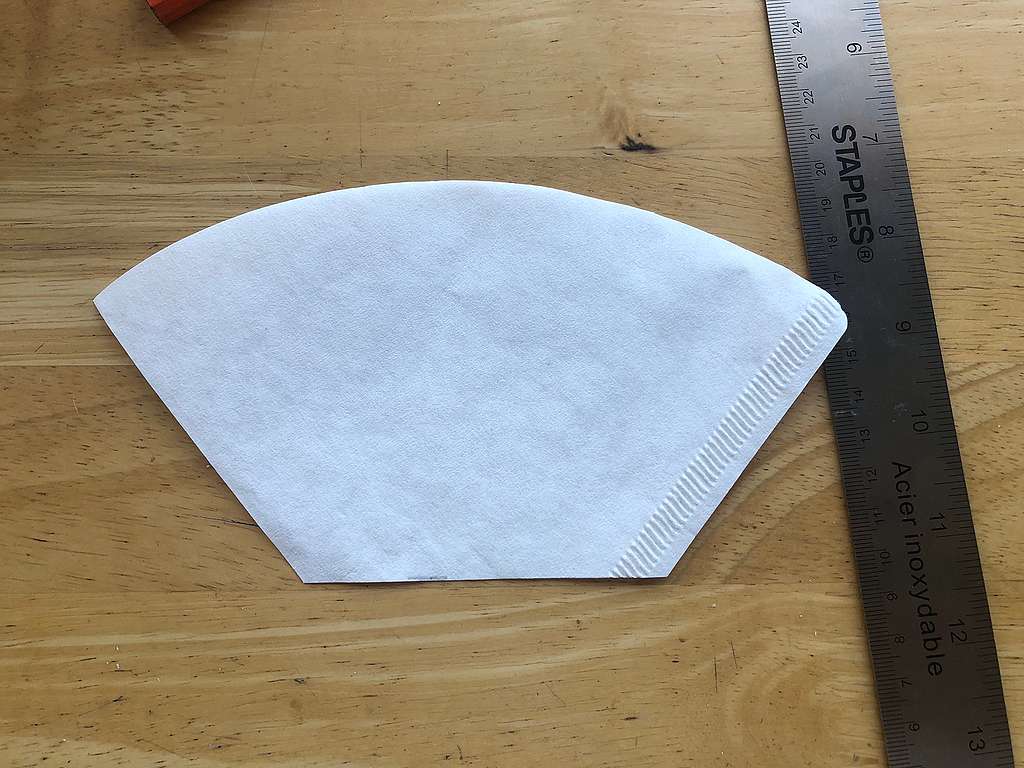
3. Place your filter on top of the fabric and roll the fabric over the filter.
4. Fold your fabric around the hair elastics or other ties and safety pin the fabric to secure the elastic or ties.
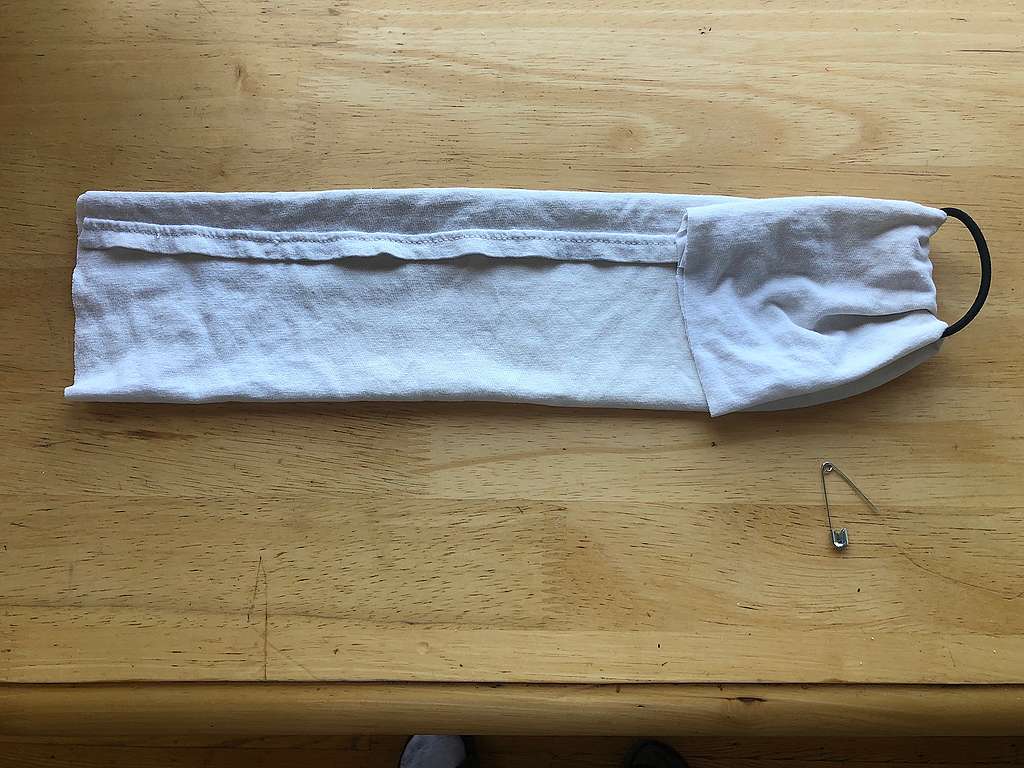
6. Use tape to close the safety pins. This is to ensure the safety pin is secure, so there is no way for it to open around your face.
7. To wear the mask, fit each elastic or tie around your ears.
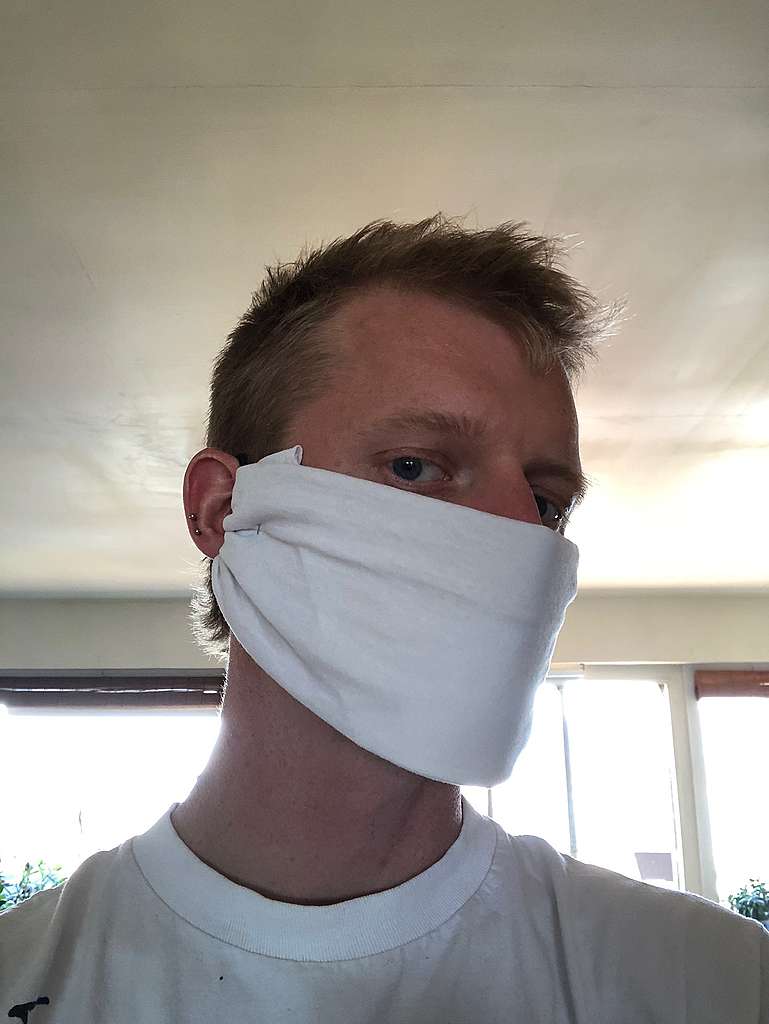
Watch out! Even with tape, under enough tension the safety pins can deform and be pulled free, becoming hazardous. Always check safety pins before putting on the mask.
You don’t have any safety pins? The mask should still work without them, provided the fabric is long enough.
How to sew a non-medical pleated face mask
You will need these materials:
- Cotton fabric, cut into three rectangles of 9”x6” (23cm x 15cm) each (you can use bedsheets, pillowcases, t-shirts, pyjamas, handkerchiefs, bandanas, tea towels, tote bags, or denim)
- Ties (you can use bottom hemmed part of a t-shirt, string, twill cord, shoelaces, strips of fabric or jersey knit, or cording)
- Cotton thread
- Coffee bag twist-tie (optional)
You will need these tools:
- Sewing machine
- Scissors
- Pins
- Measuring tape or ruler
Instructions:
1. Gather your materials and cut your cotton fabric into three 9”x6” rectangles.*
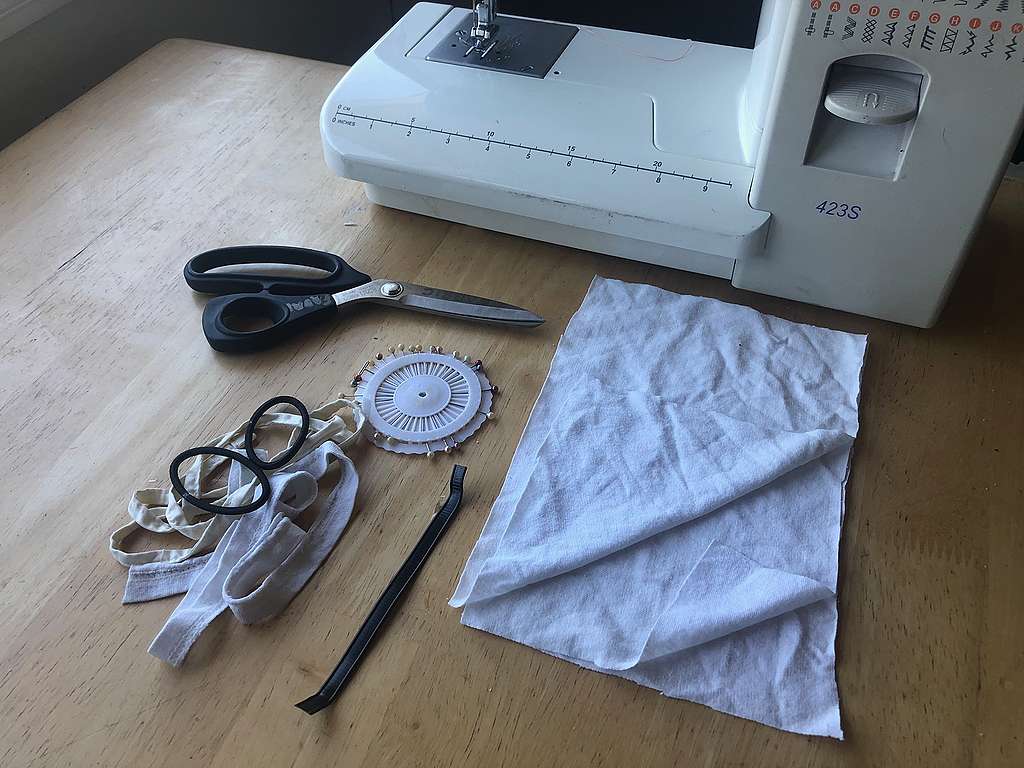
2. Place ties on top of two layers of cotton facing in, place last layer on top and pin cotton and ties in place.
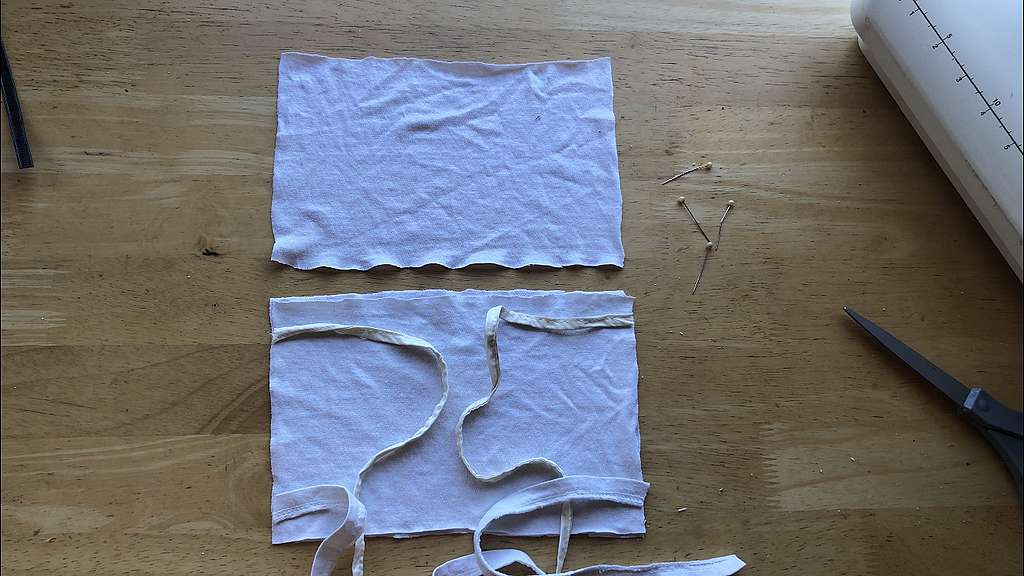
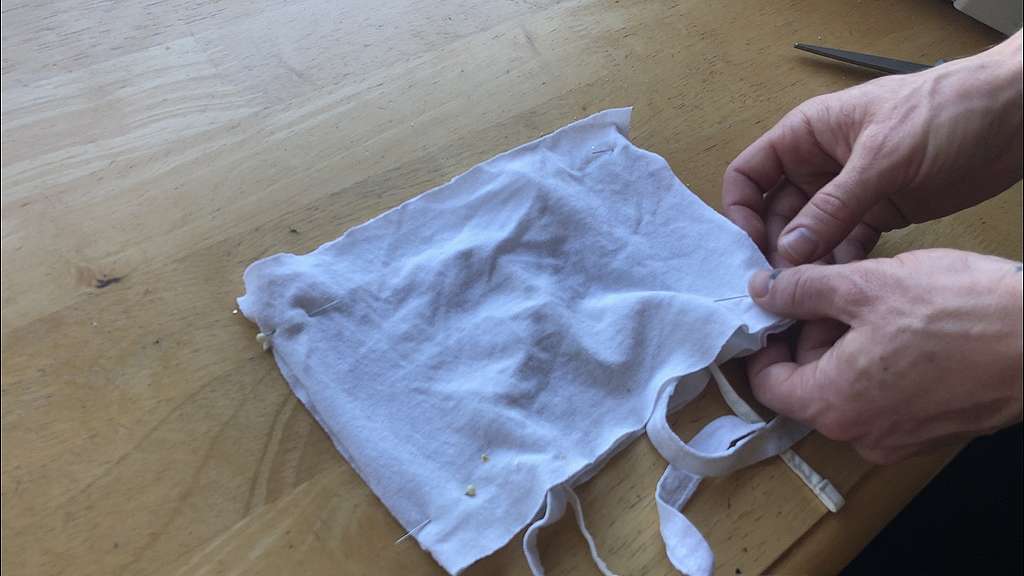
3. Sew sides, top, and part of the bottom of the mask, leaving a space to turn the mask inside out.
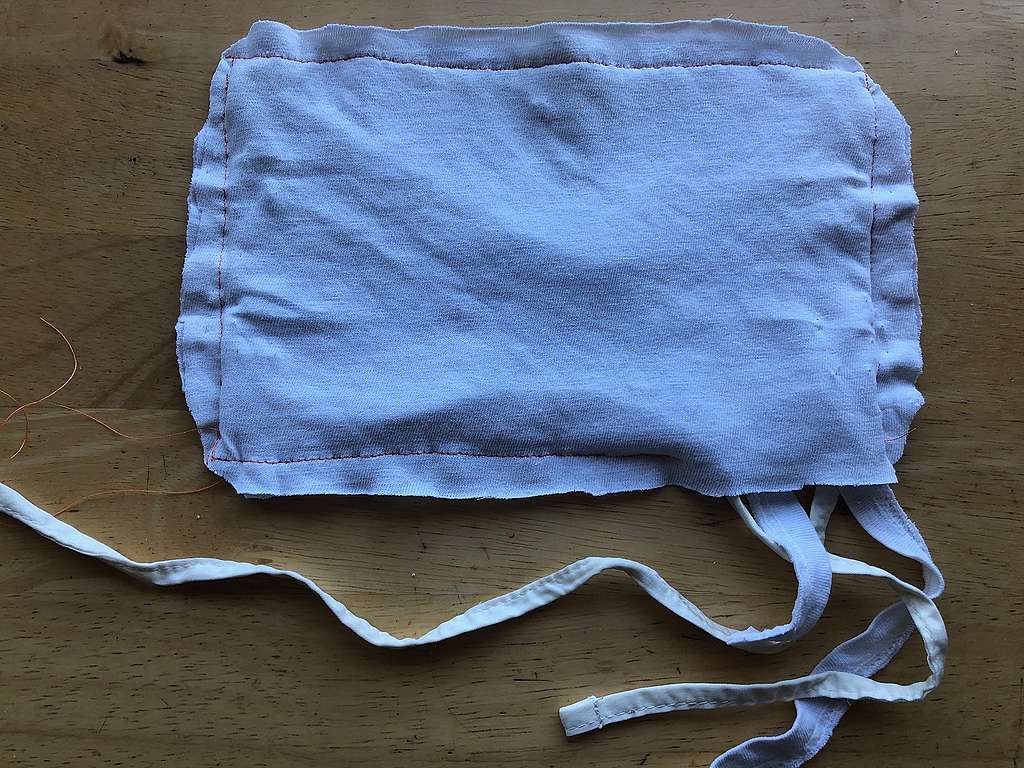
4. Turn the mask inside out.
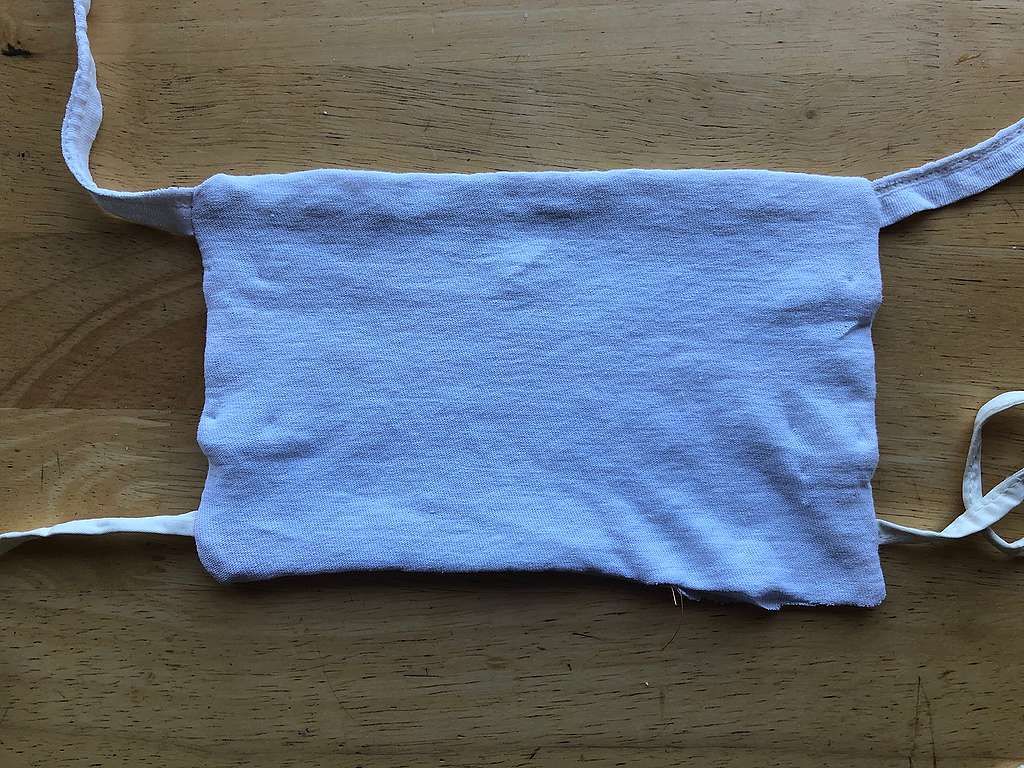
5. Optional: add coffee bag twist tie into the mask and sew it in place.
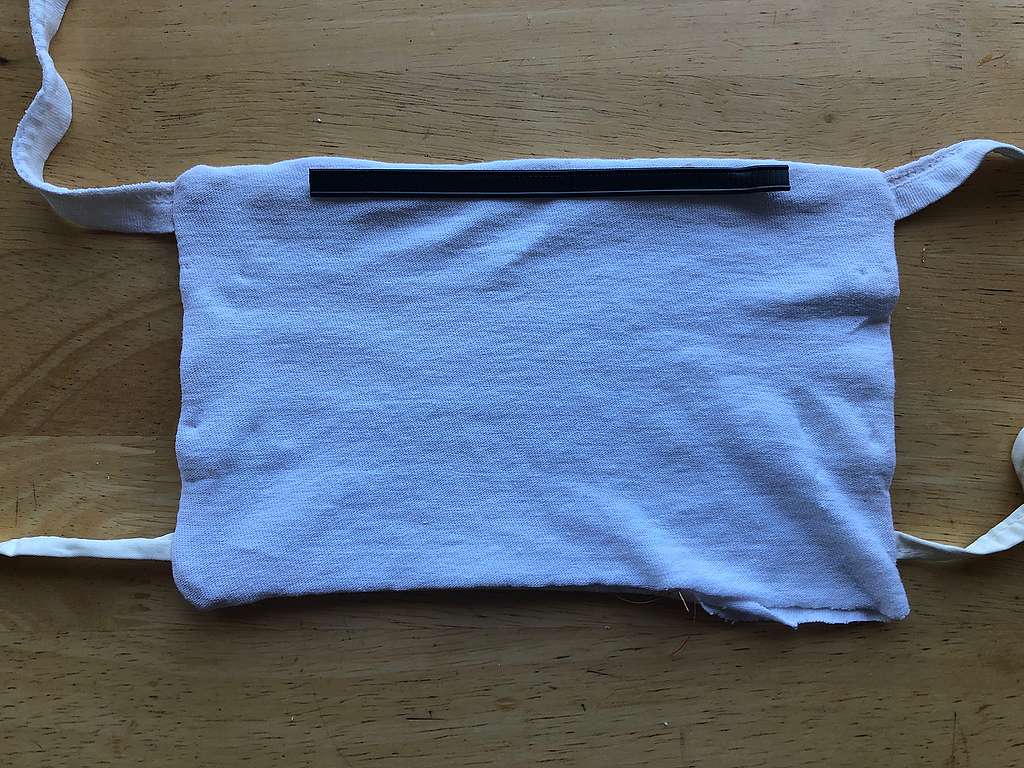
6. Pin and sew bottom of mask
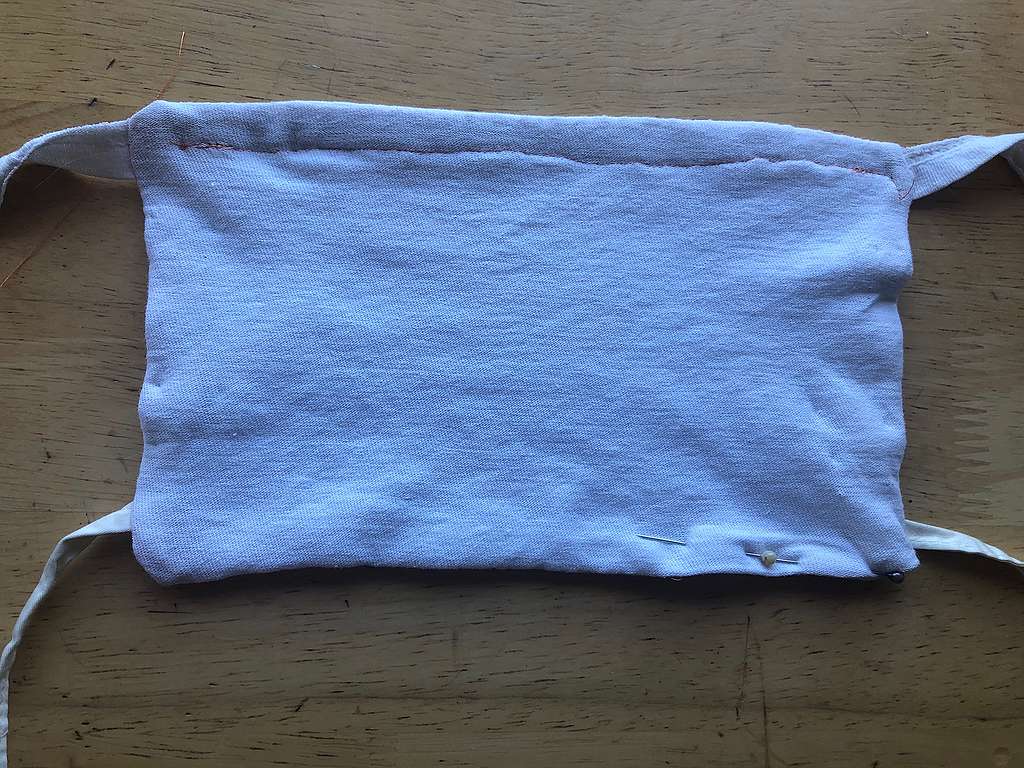
7. Fold mask twice to create symmetrical pleats, iron, fold and pin in place. Sew both sides.
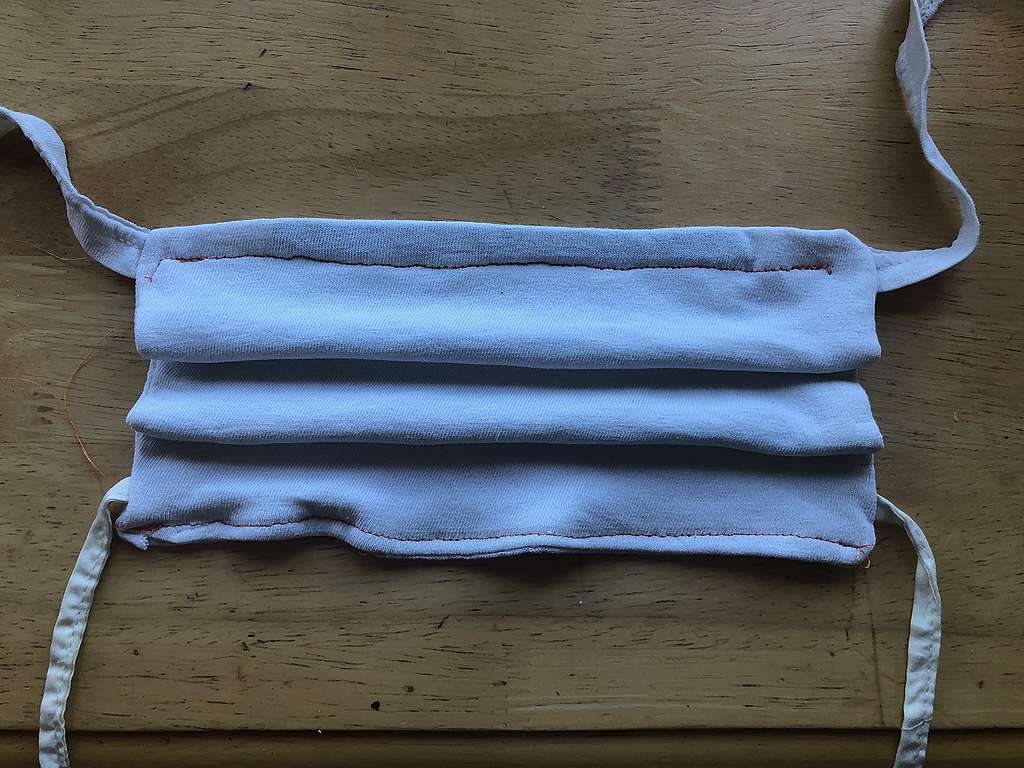
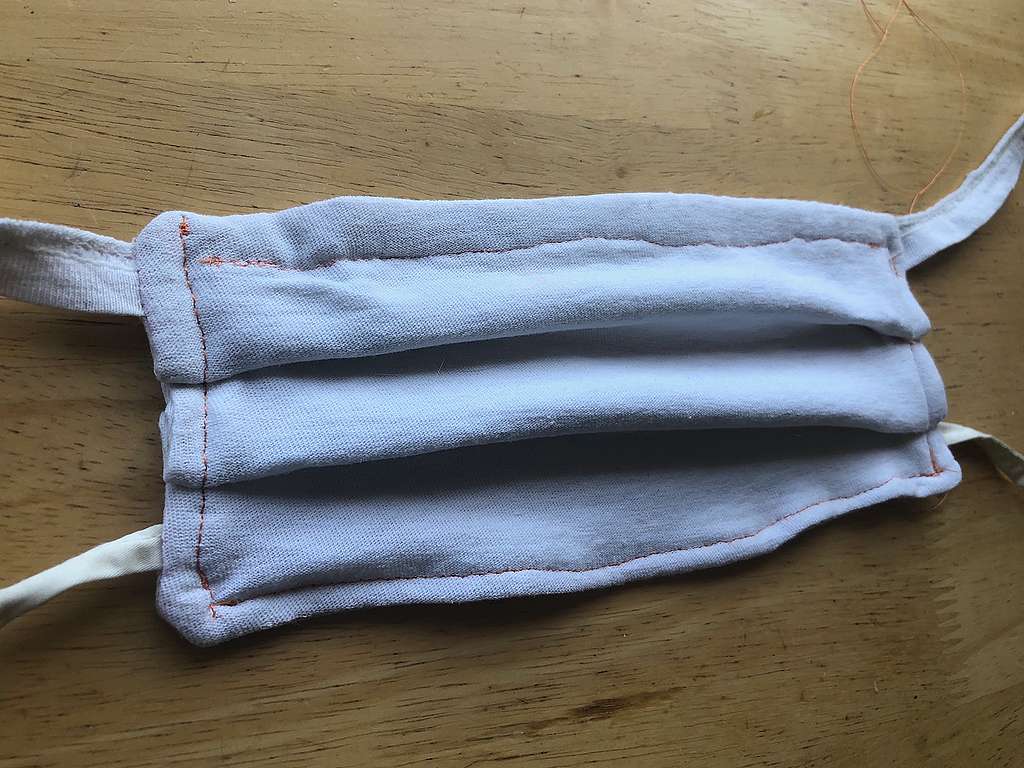
8. Remove all pins and snip excess thread.
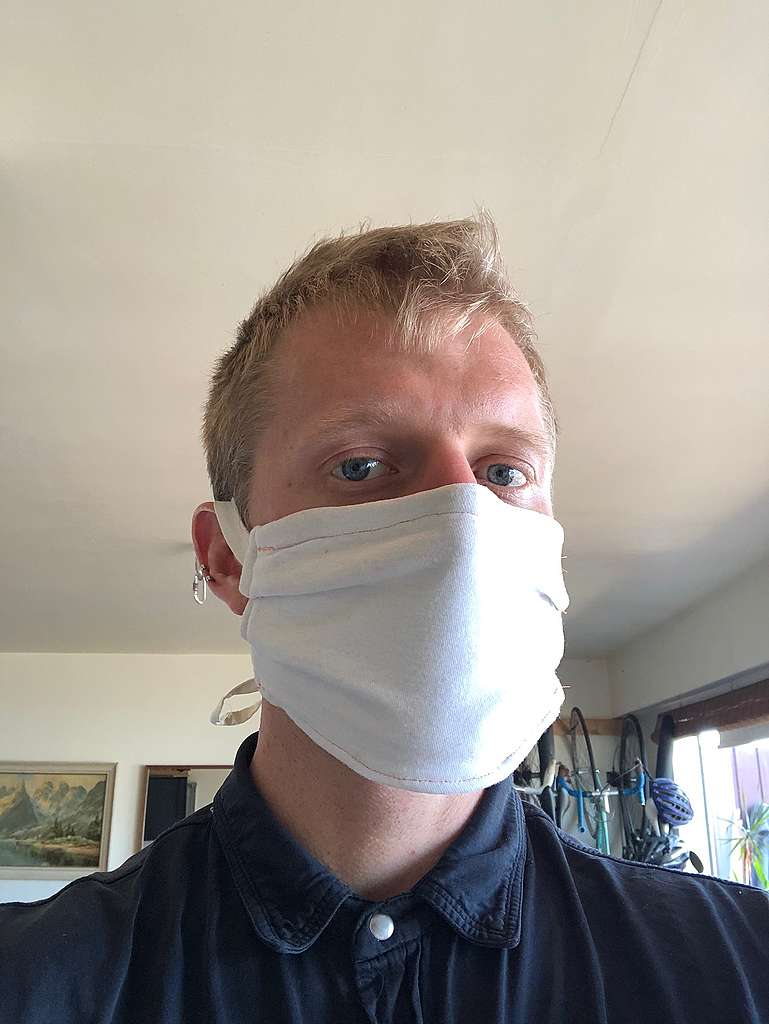
* To include an opening for inserting a removable non-woven layer to the mask, hem two rectangles together along the top horizontal edge. Hem the remaining rectangle along the top horizontal edge. Continue with the following instructions, but when sewing, do not sew the hemmed edges together. This will create an opening at the top of the mask where you can insert a non-woven layer.
How to use your fabric face mask
- It’s important that your mask fits snugly but comfortably and that there aren’t big open gaps around your face.
- Remember not to touch your face or the mask when wearing it.
- After taking off the mask, remove the non-woven layer and dispose according to your local municipal waste guidelines. Wash your hands immediately.
- The fabric mask should be laundered in hot water with fragrance free, non-toxic detergent and rinsed well.
- You can air dry the mask in sunlight.
- Before using the mask again, insert a new non-woven layer.
- If you need to use masks regularly, you may want to have more than one mask (one being laundered, the other to wear).
Remember, masks are not a replacement for handwashing and social distancing guidelines ✌️
Have you made your own upcycled face mask? Tell us about it in the comments!
Note: Your best source of information to protect your health and the health of others from COVID-19 remains official sources, such as these Government of Canada public health education resources.
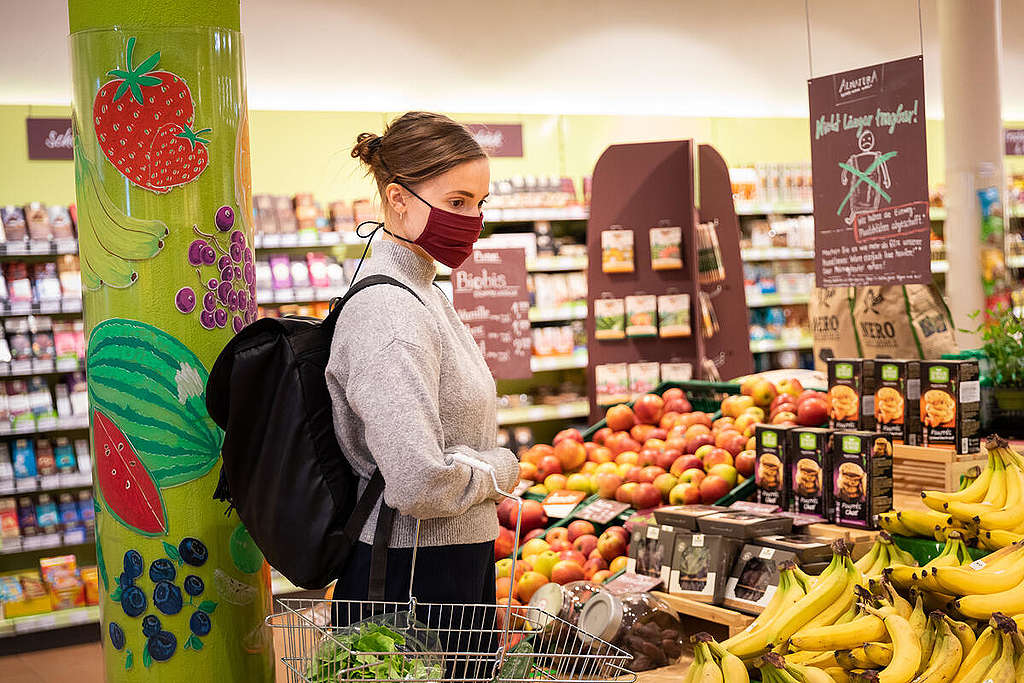
Free Guide: Eco tips to protect against COVID-19
Take action

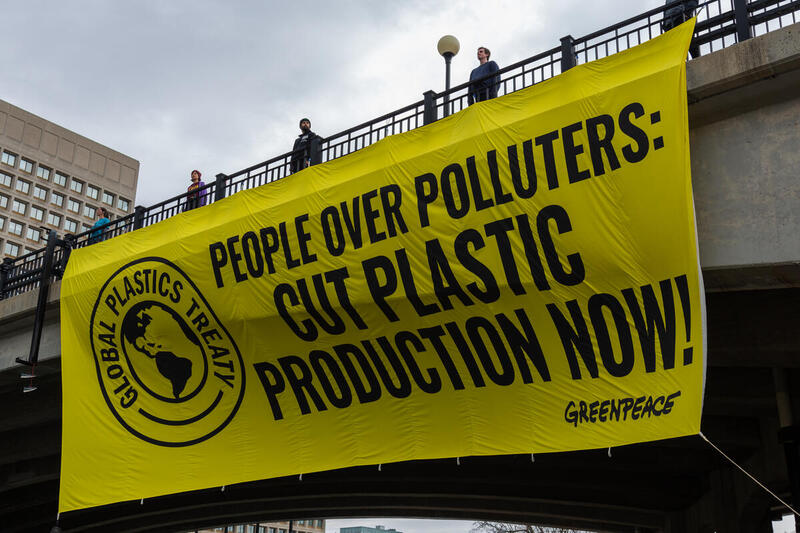

Discussion
All seems in the right direction to turn our impact on the Biosphere of this finite Planet away from destroying it. Also it is in the direction of returning what we waste ,back into the Biosphere, in a form that will be recycled as "food" to regenerate the Biosphere. The Anthropocene Epoch (Our species sojourn here) will soon end if we collectively do not behave as Nature dictates for survival. That is what science is confirming. Good work Greenpeace!
Hi, Based on your instructions above for a sewn version of a non-medical mask, I am unsure of how to insert the coffee filter inside the mask so that it stays in place but can also be removed easily for disposal after use. I would appreciate it if you would please provide a few more details. Thanks, Katherine
Hi Katherine, Apologies the instructions are unclear on this point (Jef forgot this step while making the demo mask which is why we don't have photos of it!) When you sew the mask, ensure there is a gap at the top of the mask (the part that covers the bridge of your nose) then you should be able to insert the coffee filter and it will not slip out (if you use a coffee filter or wire insert it should be even more secure). Let me know if that is clear or not and I can follow up with more detail! Thanks, Miriam
Good info for making your own mask. I had mine made by a lady who was donating money to the hospital. Will read your other articles when I cannot garden or when the weather makes me stay in. Love all your info. Thank you.
Thanks Joy. Enjoy reading!
I have used various articles of clothing cut up and created face masks with miscellaneous products in my home. some have the inserts and my idea was to use very very thin panty liners because they have adhesive on one side and the filter on the other side easy to replace so easy to pull out and wash again some have hair ties for the ears some have double strings to tie some have wire ties for possibly a baby easy to put on I just twist it a couple of times and various scarves because they are nylon and it's my understanding and using nylon over the cotton will prevent any particles to get through to your breathing that you protect you.
Thanks -- the no-sew instructions were easy to follow and seemed to work pretty well.
Thank you for marketing this great idea. I have made several and handed them out. I have also picked up an uncountable thousand from the ground that people of thoughtlessly left behind. So pleased to hear this problem is starting to be addressed.
This is awesome, thanks so much, K!
I've made masks out of cotton fabric from my "stash" of fabric using the pleated pattern with a nosepiece. Making an effective nosepiece is a problem because twist ties aren't secure enough and paper clips can be sharp on the end where you have to cut it. I've also used old t-shirts. My current pattern is this one and I like it best because it fits snugly. https://www.youtube.com/watch?v=WlguehtIpu8&list=PLzReETjB7wCnS7QARdxVghOW5U5xAHTi_&inde
just a comment about the suggested fabrics ~ tee shirts are usually made of a stretch knit fabric, so, maybe not (but I have seen this suggested elsewhere too), and I tried to make a mask out of leftover denim from another sewing project, back in March, but it was Really too heavy for anyone with breathing issues to ever become comfortable with. There are lots of video tutorials for slightly more complicated masks which offer a bit more room around the nose & mouth if you have more advanced sewing skills. I'd be interested to know what experts think of those too, Thanks
Had fun viewing your site. Thanks for posting. You've found a new fan.